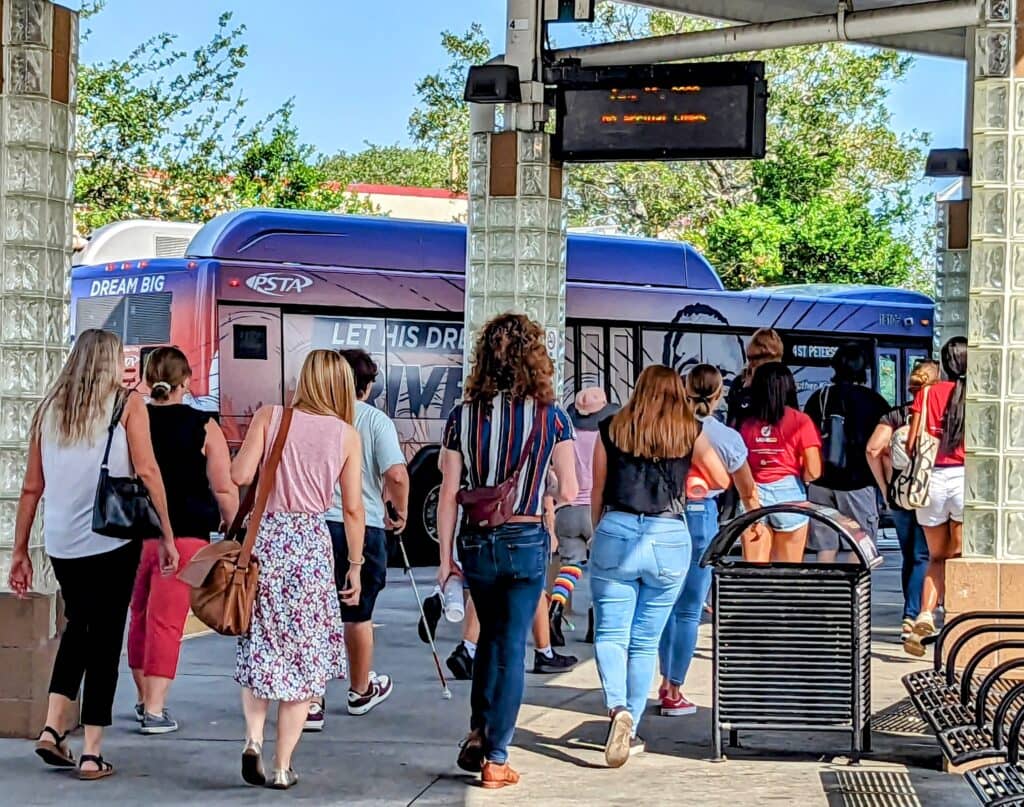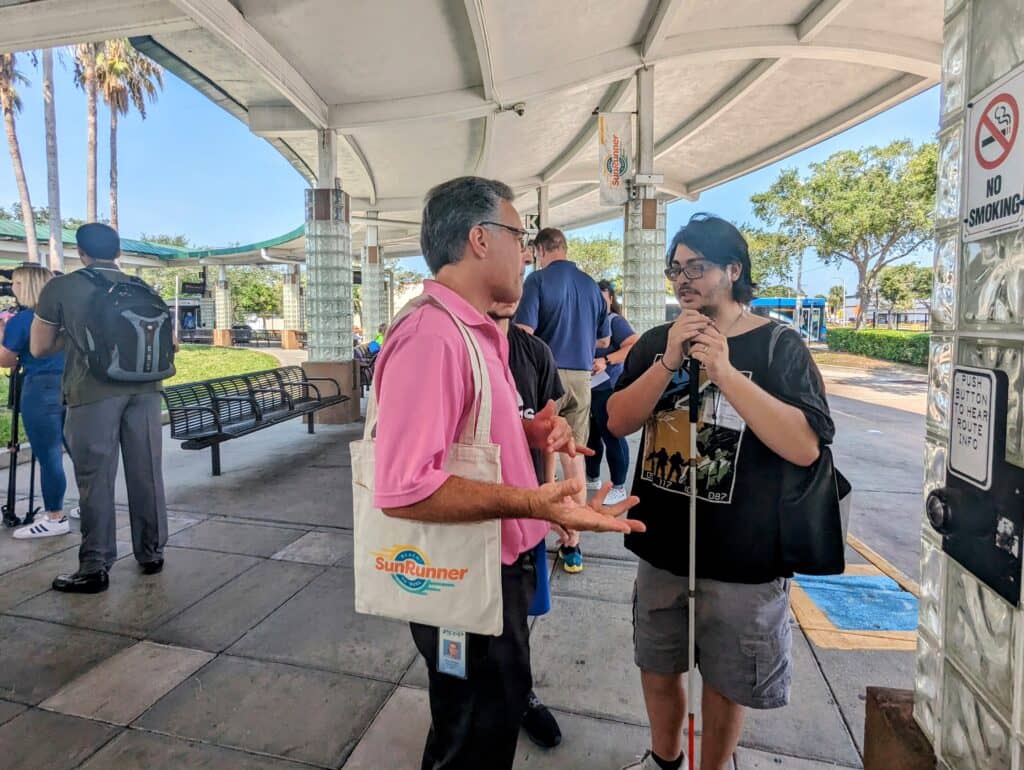Innovate
Visually impaired students test navigational app

With its circular configuration and a steady stream of buses pulling in and out of terminals, navigating St. Petersburg’s Grand Central Station could present a challenge for anyone.
Ross Silvers, ADA (Americans with Disabilities Act) officer for the Pinellas Suncoast Transit Authority (PSTA), knew it would make the perfect place for Lighthouse of Pinellas School for the Blind and Visually Impaired students to test a new mobile application.
Silvers, also visually impaired, hopes to increase accessibility for a demographic that relies on public transportation or friends and family for mobility. He told a group of 12 teens Friday that they could potentially use the Lazarillo app to find a bus and go to work, a movie, downtown or the beach.
“I suggested this place because it is probably the most confusing location to have to navigate as somebody who is low vision because it’s a circle,” Silvers explained. “If you were to close your eyes and I were to tell you to go to stop ‘C,’ you would have no idea how to get there.”

The visually impaired teens used the Lazarillo app to find specific buses at St. Petersburg’s Grand Central Station.
Chilean-based Lazarillo adds layers of accessible and interactive information to detailed digital maps. Users can customize interfaces to meet their needs, and the app provides audio messages and alerts to help the visually impaired explore cities and buildings more safely and efficiently.
The company launched a pilot program with the City of Tampa in December 2022. Founder Rene Espinoza Jimenez also participated in a Tampa Bay Wave TechDiversity cohort.
Silvers believes the platform has “great potential.” However, he noted the technology is a work in progress and looks forward to relaying invaluable feedback from the Lighthouse students.
“I never had an opportunity to do anything like this when I was their age,” Silvers said. “When I had to take a trip before, I had to plan everything out ahead of time. So now, I use my phone all the time to navigate wherever I’m going, and I don’t have to rely on strangers to be kind or cruel along the way.”
Lighthouse instructor Liz Kress said many students have “some usable vision.” She explained that they could see a minute area directly in front of their face but lack all peripheral sight.
Kress said that limited vision, combined with a phone’s magnification features and voice commands, enables the visually impaired to use platforms like Google Maps and Lazarillo. She also credited new technologies for increasing accessibility.
“Being that most of them are not going to be eligible for a driver’s license, they have to have strong mobility skills,” Kress added. “So that they can use public transportation options and know what’s available to them – and feel confident enough to do so.”
The 12 teens are part of Lighthouse’s summer transition program, which focuses on career exploration and future employment preparation. She stressed that students must rely on public transportation to become successful adults and said the SunRunner route has proven extremely helpful.
Kress said the single dedicated lane is easier and safer to navigate. The region’s first bus rapid transit system pulls into stations every 15 minutes, which increases trip efficiency.
“I think people forget how important public transportation really is,” she said. “It’s a huge benefit to our students, for sure.”
While Kress noted Lazarillo doesn’t have Apple or Google’s database, she also believes features specifically designed for the visually impaired are promising. Friday’s testing session at Grand Central Station was Vinny Feddrico’s second time using the app, and he offered some suggestions.

Ross Silvers (left), PSTA’s ADA officer, discusses the app’s functionality with Vinny Feddrico, 18.
Feddrico, 18, said the app was providing too many audio descriptions. It notified him of restrooms, the service desk and other information irrelevant to finding a specific bus amid the fleet simultaneously.
“Other than that, it’s a really good app,” Feddrico added. “It shows that people are actually there to help us, and we have resources to help us.”
He encouraged people to exercise patience when they encounter the visually impaired. Feddrico said they feel pressured to hurry when boarding a bus, which adds to the challenge.
Thalia Rosas, public relations director for Lazarillo, said several company officials also have physical disabilities. One worked in a hospital and realized how difficult it was for the visually impaired to find departments and rooms.
She said the platform is now available globally, and Lazarillo’s leadership relies on user engagement to continue improving the platform. Silvers said PSTA began working with the company about a year ago, and he believes Friday’s exercise with Lighthouse students will go a long way toward increasing the app’s functionality.
“Like any tool, it takes practice to learn how to use,” he said. “They’re going to provide us with the greatest resource, which is feedback from the actual users saying, ‘Here’s what’s working, here’s what’s not working.’ To me, that’s one of the most awesome parts of it.”







